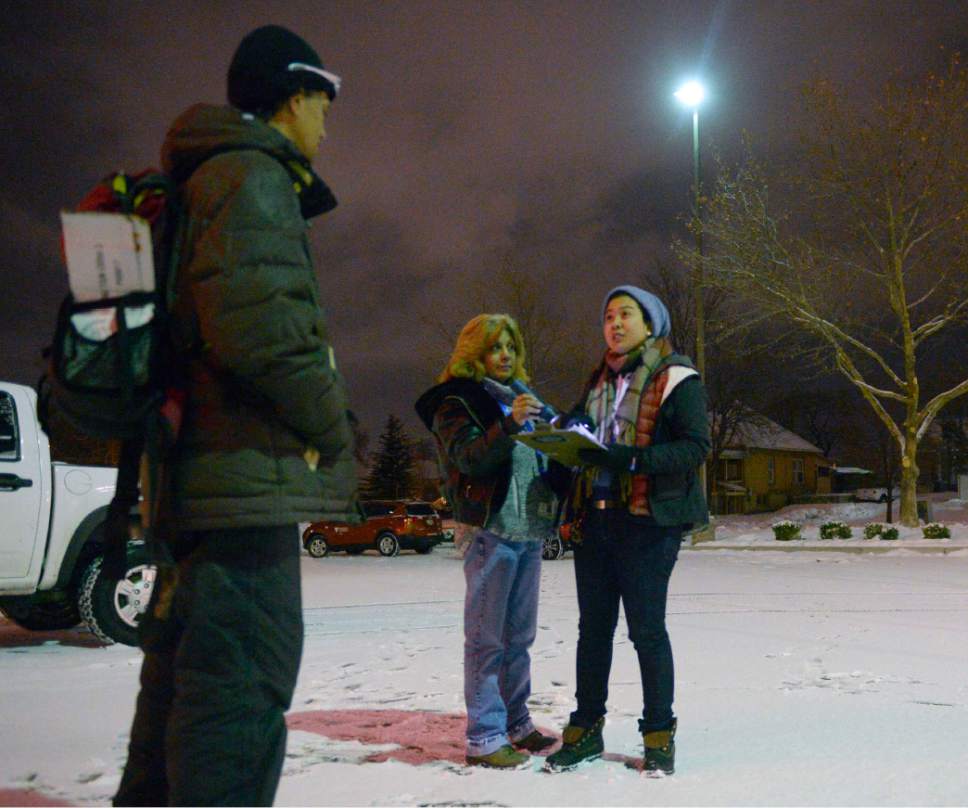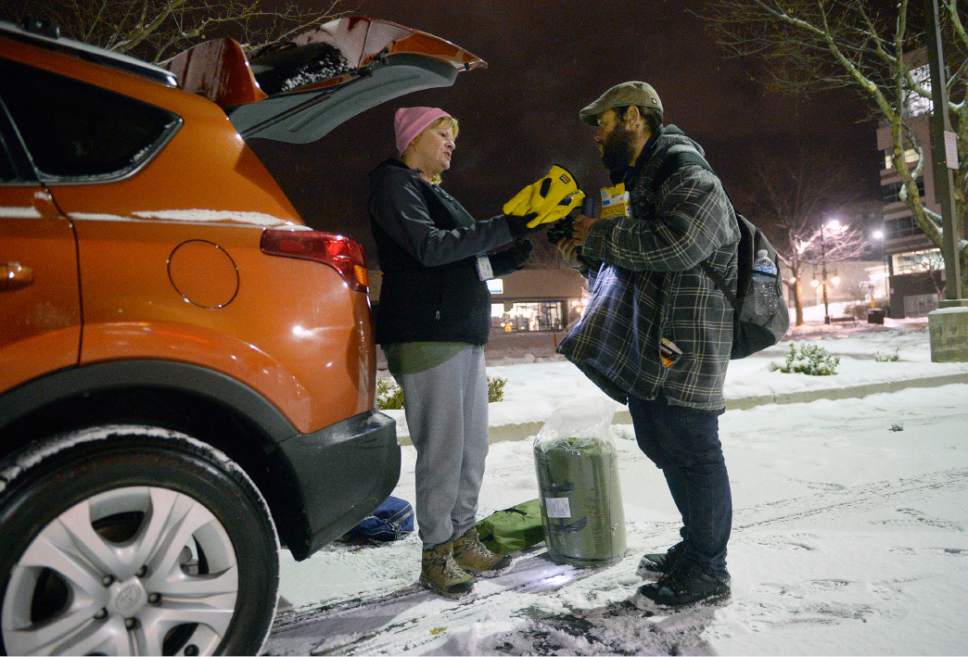This is an archived article that was published on sltrib.com in 2017, and information in the article may be outdated. It is provided only for personal research purposes and may not be reprinted.
Measures of Utah's homeless population, like the living situations of many included in that group, are complicated.
While the snapshot "Point in Time" counts mandated by the U.S. Department of Housing and Urban Development show a 9 percent reduction in Utah's homeless population between 2014 and 2016, a state database of government-funded shelter and transitional housing services reveals an 11 percent increase in clients over the same period.
The latest stats from Utah's Homeless Management Information System left some members of the state's Homeless Coordinating Committee scratching their heads at a quarterly meeting Wednesday.
Both Salt Lake City Mayor Jackie Biskupski and County Mayor Ben McAdams — embarking together on a new model that would reduce overall shelter beds in downtown Salt Lake City and improve access to services and housing — said they hoped for more inclusive data in years to come.
Still, McAdams said, "if you say [the state's data is] roughly in the right ballpark, then we've seen an increase. I think that would be reaffirmed by the anecdotal experience of all of us."
In 2016 alone, people using state- and federally funded emergency shelters and transitional housing services jumped 5 percent to 13,614 — a figure that may increase when some apparently unreported homeless youth figures are added to the total.
Confidentiality laws preclude domestic violence-related service providers from using the state's database, while wholly private providers are not required to do so.
Tamera Kohler, assistant director of housing and community development for the Utah Department of Workforce Services, readily acknowledged that the available data is "squishy" and estimated that the database roster includes about 85 percent of those experiencing homelessness.
"What we're trying to do is get the best representation we have year over year, knowing that it's incomplete," she said.
Kohler pointed to a discrepancy in the total for the grouping of Utah, Summit and Wasatch counties, which reported a 63 percent drop in homeless youth. That was likely due to inconsistent tracking from a single provider, she said, and may be revised.
The rest of the state saw service clients increase by 18 percent to 3,231 — a spike Kohler attributes to increased capacity with newer shelters in Ogden and St. George.
HUD's one-night Point in Time count paints a starkly different portrait of homelessness, which it indicates has declined by 7 percent in Utah since 2007 and 15 percent nationwide.
But HUD has changed definitions and methods for the count, and totals can also vary based on early-winter temperatures. Extreme cold may lead some to stay on couches who wouldn't otherwise, or leave the area for a warmer climate.
Early indications are that January's count — which is still being vetted for possible duplications — will reflect an uptick from the 57 unsheltered homeless people found in Salt Lake City in 2016. Robert Wesemann, who leads the effort for Volunteers of America, said Wednesday that volunteers engaged with 200 people outside of the shelter.
Longtime Salt Lake City homeless advocate Pamela Atkinson said both data sets are flawed — though by no fault of those preparing them — due to a wide variation in types of services and living situations.
The overall homeless population, she said, is "much higher than what we see here."
The state also reported Wednesday that the average length of stay in emergency shelters increased by two days to 53 during 2016, while the median length of stay rose by three, to 20.
Salt Lake City and county leaders have collaborated for two years to rethink homeless services and rid Pioneer Park of rampant drug-dealing and lawlessness.
One of their goals: to close the 1,100-bed emergency shelter at 210 S. Rio Grande St. after the opening of four planned cutting-edge 150-bed shelters.
Homeless advocates have expressed concern that even with improved services and access to affordable housing, it's reckless to commit to closing the Rio Grande shelter until the need has been eliminated.
Twitter: @matthew_piper —
Utah's homeless service users
For what it believes is the most accurate available count of people experiencing homelessness in a given year, the state tracks people using government-funded emergency shelter or transitional housing services through its Homeless Management Information System. Note that this data excludes services related to domestic abuse, as well as private organizations that don't contribute to the HMIS database.
Total homeless service clients
2014 • 12,241
2015 • 13,027 — plus 7 percent
2016 • 13,614 — plus 4 percent
Salt Lake County
2015 • 8,929
2016 • 9,266 — plus 4 percent*
Utah, Summit and Wasatch counties
2015 • 1,359
2016 • 1,117 — minus 18 percent**
Rest of Utah
2015 • 2,739
2016 • 3,231 — plus 18 percent*
Adults without children
2015 • 8,269
2016 • 9,167 — plus 11 percent
Adults with children
2015 • 4,099
2016 • 4,136 — plus 1 percent
Children
2015 • 659
2016 • 311 — minus 53 percent**
* Tooele County was included in the Salt Lake County total in 2015 and with the "Rest of Utah" category in 2016.
** Data may be skewed by inconsistent reporting from a homeless youth service provider





